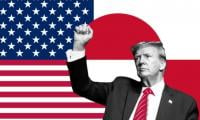Inclusive industry
The industrial sector is a catalyst for higher productivity, innovation, employment generation and exports. No country can achieve and sustain its living standard without a vibrant industrial sector. In an era of rapid technological change, developing countries including Pakistan are striving to improve industrial competitiveness to galvanize their economies, create jobs and boost economic growth. However, a prerequisite for any effective industrial policy is investments in human capital, to produce a more skilled and efficient workforce. It is here that the links between industrial policy, economic growth and human development need to be better understood for policymaking.
The government of Pakistan is hoping to accelerate the processing of industrialization under the umbrella of the China-Pakistan Economic Corridor (CPEC). A Business Council has been constituted by the government to deliberate on a new industrial model for development with a focus on agriculture, industry, housing, tourism and any other sectors included in CPEC’s long-term plan.
With a population of 207 million, a favourable geo-strategic and geo-economic location, ample of human resources, and abundant natural endowments, Pakistan has immense potential to develop into a well-diversified industrialized economy. Yet, Pakistan fails to exploit its inherent advantages and has lagged compared with its competitors in attaining industrial competitiveness. To reap the maximum benefits from the technological spill-over and industrial relocation under CPEC and domestic industrialization, Pakistan needs to develop a comprehensive industrial policy.
What would be the shape of this new industrial policy? The United Nations Sustainable Development Goals (SDGs) call for inclusive and sustainable policies to ensure sustainable development. To align with the SDGs agenda, Pakistan needs to revisit industrial policy and shift its focus from traditional industrial development to inclusive and sustainable industrial development (ISID).
The concept of ISID is reflected by SDG 9: “Build resilient infrastructure, promote inclusive and sustainable industrialization and foster innovation countries”. The bottom line of this idea is to activate industry as an engine of growth but not at the expense of social indicators and sustainability. ISID enhances and reinforces economic growth and diversification in a socially inclusive and environmentally sustainable manner. It is based on the premise that no one is left behind in benefiting from industrial growth and that prosperity is shared among all parts of society as industry creates the wealth needed to address critical social and humanitarian needs.
Widespread poverty and environmental degradation, often caused as a result of poorly planned industrial policies are two major developmental concerns. More than 50 million people face income poverty in Pakistan. Over 75 million encounter social poverty and don’t have access to health, education and shelter. Over 55 million people face environmental poverty. A majority of these people don’t have access to clean water and sanitation facilities.
Institutional poverty is also very high. It is a source of income inequality and underdevelopment. Weak institutions provide room for politicians and government officials to exploit public resources for their own interests. Corruption and ineffective governments often fuel poverty by increasing income inequalities while countries with better institutions are more likely to experience sustained and equitable economic growth.
An Inclusive Industrial Policy (IIP) can be instrumental to address all aspects of poverty in the country. It is generally believed that economic growth is a pre-requisite to overcome poverty. To reduce poverty, the IIP should promote development patterns that are both growth-oriented and provide maximum opportunities for the poor to benefits from this growth. The IIP would aim to shape structural change in a way as to enhance competitiveness and productivity growth while increasing the income of the poor more than proportionally.
What are the key ingredients of the IIP? First, the IIP must ensure certain safeguards to protect the most vulnerable groups. Innovation and competition allow firms to shift from labour intensive to capital intensive production patterns. Poor people with low education and skills may fail to switch quickly to alternative opportunities for livelihoods. The proposed policy must devise a mechanism to protect unskilled workers through insurance and job security measures. The government may also impose some restrictions on certain markets that are critical for the livelihood of the poor. The government can fix specific quotas for poor unskilled workers on government projects, especially CPEC-related infrastructure projects.
Second, the IIP needs to respond to the urgent need for additional and more productive income and employment opportunities for the poor. There are various ways to promote pro-poor employment: i) promote manufacturing activities that absorb large number of low/semi-skilled workers into specific sectors such as garments; ii) policies that increase female participation in the labour market, such as by promoting industrial activities like garments, that have a preference for hiring women and by promoting women entrepreneurship; iii) policies that improve the access of the poor to rural non-farm employment; and iv) policies to stimulate productivity development in micro and small enterprises.
Third, the opportunity costs of industrial transformation need to be considered while experimenting with new industrialization process. A country like Pakistan with huge deficit in social services like health, education, water and sanitation, should consider properly if and when industrial development programmes are justified. When industrial projects are costly and create few jobs for the poor, it may not be justified from inclusive perspective.
Apart from these measures, the IIP needs to focus on improvement in institutional quality, encouragement of research and development, technological up-gradation and skill development. Given the right policy environment, Pakistan has great potential to expand its industrial sector which can be instrumental in promoting macroeconomic stability, creating jobs and boosting the country’s long-term growth prospects.
This implies that the IIP means to find an appropriate balance between encouraging productivity growth through competitions and providing space for learning and the gradual adaptation of the workforce according to its capabilities and initial conditions.
Based on these ingredients, the government needs to redesign and implement the IIP. To covert CPEC into a welfare enhancing project, the government may revisit the industrial development plans and ensure inclusive and sustainable industrial development. Without considering the elements of the proposed IIP, we may not reap the real benefits of CPEC.
The writer is associate professor at the Pakistan Institute of Development
Economics (PIDE). Email: dr.iqbaln@gmail.com
-
 Conan O’Brien Gets Honest About State Of Comedy
Conan O’Brien Gets Honest About State Of Comedy -
 Kyle Richards, Mauricio Umansky Maintaining Normalcy For Kids: Report
Kyle Richards, Mauricio Umansky Maintaining Normalcy For Kids: Report -
 Sarah Michelle Gellar Shares Honest Take On Common Beauty Procedures
Sarah Michelle Gellar Shares Honest Take On Common Beauty Procedures -
 Prince William's Recent Challenges Only 'strengthened' His Commitment To Kate Middleton
Prince William's Recent Challenges Only 'strengthened' His Commitment To Kate Middleton -
 'Hamnet' Star Jessie Buckley Recalls Being 'brutalized' In Teenage
'Hamnet' Star Jessie Buckley Recalls Being 'brutalized' In Teenage -
 Mystery Behind Greenland: European Allies Eyeing Whether US Should Take Over Denmark's Territory
Mystery Behind Greenland: European Allies Eyeing Whether US Should Take Over Denmark's Territory -
 Prince William's Private Estate Plans Major Housing Project
Prince William's Private Estate Plans Major Housing Project -
 How Are Prince William And Kate Middleton's Kids Helping Local Community?
How Are Prince William And Kate Middleton's Kids Helping Local Community? -
 Kate Winslet Reveals How Son Benefited From Her Baby Daddies
Kate Winslet Reveals How Son Benefited From Her Baby Daddies -
 Prince Harry Plans To Reunite With William Amid Desperate Plea To King Charles?
Prince Harry Plans To Reunite With William Amid Desperate Plea To King Charles? -
 Millie Bobby Brown Breaks Silence On 'Stranger Things' Finale
Millie Bobby Brown Breaks Silence On 'Stranger Things' Finale -
 Joe Keery Reveals The Person Who Inspires Him The Most
Joe Keery Reveals The Person Who Inspires Him The Most -
 King Charles Major Plans For His Home In Scotland Revealed
King Charles Major Plans For His Home In Scotland Revealed -
 Tomorrowland Thailand 2026: Dates And Ticket Details For Fans Revealed
Tomorrowland Thailand 2026: Dates And Ticket Details For Fans Revealed -
 Prince Harry Making 'secret Calls' To Jennifer Lopez: How Meghan Reacts?
Prince Harry Making 'secret Calls' To Jennifer Lopez: How Meghan Reacts? -
 Kate Middleton, Prince William Vow To Put Their Marriage First: 'Last Hurrah'
Kate Middleton, Prince William Vow To Put Their Marriage First: 'Last Hurrah'



